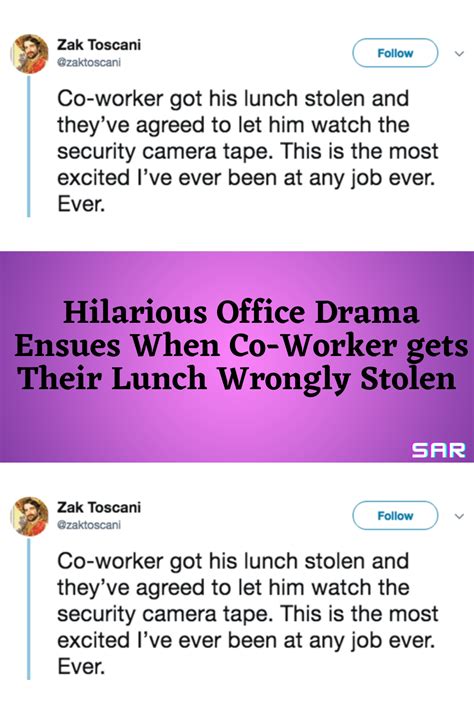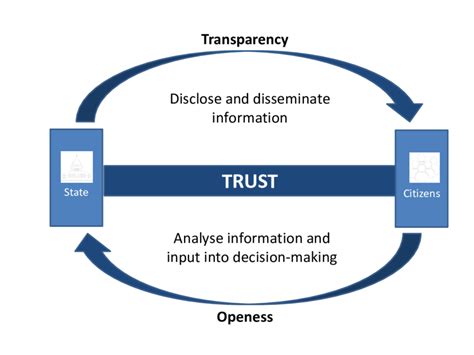
A Goldendoodle named Winnie emerged from a recent grooming appointment looking less like a playful pup and more like a dog in the throes of a mid-life crisis, prompting amusement and shock from her owner and viral attention online.
Sarah, Winnie’s owner, documented the drastic transformation on TikTok, showcasing the once fluffy Goldendoodle with a strikingly shorter, more severe haircut. The video, which has garnered millions of views, humorously illustrates the unexpected outcome of what was intended to be a routine grooming session. “I dropped off a Goldendoodle and picked up our middle-aged man,” Sarah captioned the video, encapsulating the widespread sentiment of disbelief and humor.
The incident highlights the potential variability and occasional pitfalls in professional pet grooming, sparking discussions about communication between pet owners and groomers, breed-specific grooming needs, and the subjective nature of aesthetic preferences when it comes to animal haircuts. While the “middle-aged man” look was not what Sarah anticipated, the internet’s reaction underscores a universal understanding of the occasional, unpredictable nature of pet grooming experiences.
The viral sensation began when Sarah entrusted Winnie to a groomer, expecting the standard Goldendoodle trim that maintains the breed’s characteristic soft, fluffy appearance. Goldendoodles, a cross between a Golden Retriever and a Poodle, require regular grooming to prevent matting and maintain a healthy coat. Their coats can vary significantly, ranging from wavy to curly, which necessitates different grooming approaches. However, the outcome deviated significantly from the expected, leaving Winnie with a noticeably shorter and arguably less flattering haircut.
In her TikTok video, Sarah showcased the before-and-after transformation, emphasizing the stark contrast between Winnie’s pre-grooming fluffiness and her post-grooming, more angular appearance. The video quickly went viral, with viewers expressing a mix of amusement, sympathy, and shock. Many commenters noted the uncanny resemblance to a “middle-aged man,” a comparison that resonated widely and contributed to the video’s viral success.
“I think she’s still adorable, but it was just so shocking,” Sarah told Yahoo Lifestyle. “I wasn’t expecting such a drastic change.”
The episode raises important questions about the grooming process and the dynamics between pet owners and groomers. Effective communication is paramount to ensuring that the grooming outcome aligns with the owner’s expectations. Owners should clearly articulate their desired style, length, and any specific preferences or concerns they may have. Visual aids, such as pictures of the desired haircut, can be particularly helpful in bridging any potential communication gaps.
Furthermore, understanding breed-specific grooming requirements is essential. Goldendoodles, with their diverse coat types, require groomers who are experienced in handling their unique needs. Factors such as coat density, texture, and growth patterns can influence the final result. Owners should seek out groomers who have a proven track record with Goldendoodles or similar breeds.
However, even with clear communication and experienced groomers, there is always an element of subjectivity involved in pet grooming. Aesthetic preferences can vary widely, and what one person considers a stylish haircut, another may find less appealing. Ultimately, the goal should be to prioritize the pet’s health and comfort while striving to achieve a look that the owner finds satisfactory.
The viral response to Winnie’s grooming mishap underscores the power of social media in amplifying everyday experiences. The internet’s collective reaction, ranging from humorous commentary to empathetic support, highlights the shared understanding of the occasional unpredictability of pet grooming. While the “middle-aged man” look was not what Sarah initially envisioned, she has embraced the situation with good humor, turning an unexpected grooming outcome into a viral sensation.
The incident also serves as a reminder of the importance of finding a groomer who understands both the breed-specific needs of the pet and the owner’s aesthetic preferences. Building a strong relationship with a trusted groomer can help ensure a positive and predictable grooming experience.
Moreover, this incident can be used as a learning opportunity for groomers. The feedback from social media can provide valuable insights into customer expectations and preferences. Understanding the nuances of breed-specific grooming, coupled with effective communication skills, can help groomers avoid similar mishaps and foster stronger relationships with their clients.
In conclusion, Winnie’s grooming transformation, while unexpected, has provided a moment of levity and sparked important conversations about pet grooming practices. From clear communication to breed-specific expertise, the incident underscores the multifaceted nature of the grooming process and the importance of aligning expectations between pet owners and groomers. And while Winnie may temporarily resemble a “middle-aged man,” her story serves as a reminder that even the most unexpected outcomes can be embraced with humor and turned into a viral sensation.
The story has also ignited a broader discussion about the beauty standards we apply to pets and whether these standards align with the animal’s well-being. Some argue that prioritizing a specific aesthetic can sometimes compromise the animal’s comfort or health. For instance, excessively short haircuts can leave pets vulnerable to sunburn or temperature fluctuations. Therefore, it is crucial for pet owners and groomers to prioritize the animal’s welfare above all else.
Sarah’s experience with Winnie is not unique. Many pet owners have shared similar stories of grooming mishaps, ranging from uneven haircuts to unexpected color changes. These experiences highlight the inherent risks involved in entrusting a pet to a groomer, regardless of their level of expertise. However, by taking proactive steps to communicate effectively and research groomers thoroughly, pet owners can minimize the likelihood of such mishaps.
The viral attention surrounding Winnie’s haircut has also prompted discussions about the ethics of pet grooming. Some argue that certain grooming practices, such as dyeing or extreme haircuts, can be considered unethical if they are solely for the owner’s amusement and do not benefit the animal in any way. Others maintain that as long as the animal is not harmed or distressed, such practices are acceptable. This debate underscores the complex ethical considerations involved in pet ownership and the responsibility of owners to prioritize their pets’ well-being.
The impact of Winnie’s story extends beyond the realm of pet grooming. It serves as a broader commentary on the power of social media to shape public perception and amplify everyday experiences. In an era where images and videos can go viral in a matter of seconds, individuals and businesses must be mindful of the potential consequences of their actions. In this case, a simple grooming mishap has become a global conversation starter, highlighting the importance of transparency, accountability, and empathy in the digital age.
The situation with Winnie has also shed light on the emotional bond between pet owners and their animals. For many people, pets are not merely animals but cherished members of the family. Therefore, any perceived harm or mistreatment of a pet can evoke strong emotional reactions. The outpouring of support for Winnie on social media demonstrates the depth of this emotional connection and the shared sense of responsibility that pet owners feel towards their animals.
In conclusion, Winnie’s grooming mishap is more than just a funny anecdote. It is a multifaceted story that touches upon themes of communication, aesthetics, ethics, and the human-animal bond. By examining the various aspects of this incident, we can gain a deeper understanding of the complexities of pet ownership and the importance of prioritizing the well-being of our furry companions.
The incident has also highlighted the growing trend of “doodle” breeds and the specific grooming challenges they present. Goldendoodles, Labradoodles, and other poodle mixes have become increasingly popular due to their hypoallergenic coats and friendly temperaments. However, their unique coat types require specialized grooming techniques, and not all groomers are equally equipped to handle them.
One of the biggest challenges in grooming doodles is managing their dense, often curly coats, which are prone to matting. Matting occurs when loose fur becomes tangled and forms dense knots, which can be painful for the animal and difficult to remove. Regular brushing and professional grooming are essential to prevent matting and maintain a healthy coat.
Another challenge is achieving a consistent and aesthetically pleasing haircut. Doodle coats can vary significantly in texture and density, even within the same litter. This variability can make it difficult to achieve a uniform look, and groomers must be skilled in adapting their techniques to suit each individual dog’s coat.
The increasing popularity of doodle breeds has led to a growing demand for groomers who specialize in their unique grooming needs. Some groomers have even developed specialized techniques and tools specifically for grooming doodles. These groomers often charge higher rates due to the extra time and expertise required.
For pet owners considering a doodle breed, it is essential to factor in the cost of professional grooming. Regular grooming is not just about aesthetics; it is also crucial for the animal’s health and well-being. Neglecting grooming can lead to matting, skin infections, and other health problems.
In addition to professional grooming, doodle owners should also invest in high-quality grooming tools and learn how to properly brush their dog’s coat at home. Regular brushing can help prevent matting and reduce the frequency of professional grooming appointments.
The Winnie incident serves as a cautionary tale for doodle owners, highlighting the importance of choosing a groomer who is experienced in handling their breed’s unique grooming needs. By doing their research and communicating effectively with their groomer, doodle owners can minimize the risk of grooming mishaps and ensure that their furry friends look and feel their best.
Moreover, the incident has sparked a conversation about the power dynamics between pet owners and groomers. In many cases, pet owners feel intimidated or uncomfortable expressing their concerns to groomers, especially if they are not satisfied with the outcome. This power imbalance can prevent pet owners from receiving the service they expect and can lead to dissatisfaction and frustration.
To address this issue, it is essential to foster a culture of open communication and mutual respect between pet owners and groomers. Groomers should be encouraged to listen actively to pet owners’ concerns and to be transparent about their grooming techniques and pricing. Pet owners, in turn, should feel empowered to express their expectations and to provide feedback to groomers, both positive and negative.
One way to promote open communication is to schedule a consultation with the groomer before the appointment. This consultation allows the pet owner to discuss their desired style, any specific concerns they may have, and to get a sense of the groomer’s experience and expertise. It also gives the groomer an opportunity to assess the pet’s coat condition and to provide realistic expectations about the outcome.
Another way to foster open communication is to provide groomers with clear instructions and visual aids, such as pictures of the desired haircut. This helps to ensure that both the pet owner and the groomer are on the same page and reduces the risk of misunderstandings.
After the grooming appointment, pet owners should take the time to carefully inspect their pet’s haircut and to provide feedback to the groomer. If they are not satisfied with the outcome, they should express their concerns politely and respectfully. In most cases, groomers are willing to make adjustments to correct any errors or to address any concerns.
However, in some cases, it may be necessary to seek a second opinion from another groomer. If the pet owner is consistently dissatisfied with the groomer’s services, it may be time to find a new groomer who is a better fit for their needs.
Ultimately, the goal is to build a strong and trusting relationship between pet owners and groomers. This relationship should be based on open communication, mutual respect, and a shared commitment to the pet’s well-being. By fostering such relationships, we can ensure that pets receive the best possible care and that pet owners have a positive and satisfying grooming experience.
The discussion surrounding Winnie’s grooming experience also leads to considering the role of training and certification for pet groomers. Currently, the pet grooming industry is largely unregulated, meaning that anyone can claim to be a groomer without any formal training or certification. This lack of regulation can lead to inconsistent quality of service and can put pets at risk of injury or mistreatment.
Many argue that the pet grooming industry should be regulated and that groomers should be required to undergo formal training and certification. This would help to ensure that groomers have the knowledge and skills necessary to provide safe and effective grooming services.
There are several organizations that offer certification programs for pet groomers. These programs typically involve classroom instruction, hands-on training, and a written exam. Certified groomers are required to adhere to a code of ethics and to maintain their certification through continuing education.
While certification is not mandatory in most areas, it can be a valuable credential for groomers. It demonstrates their commitment to professionalism and their expertise in pet grooming. Pet owners can also use certification as a criterion when choosing a groomer.
In addition to certification, ongoing training is essential for pet groomers. The pet grooming industry is constantly evolving, with new techniques, tools, and products emerging all the time. Groomers who stay up-to-date on the latest trends and best practices are better equipped to provide high-quality service to their clients.
There are many opportunities for groomers to receive ongoing training, including workshops, seminars, and online courses. Some grooming supply companies also offer training programs for groomers who use their products.
By investing in training and certification, pet groomers can enhance their skills, improve their service, and build trust with their clients. This, in turn, can lead to a more professional and ethical pet grooming industry.
The incident with Winnie also raises the question of legal recourse in cases of grooming negligence. While most grooming mishaps are minor and can be resolved amicably, there are instances where groomer negligence can result in serious injury or even death to the pet. In such cases, pet owners may have legal recourse.
Pet owners who believe that their pet has been injured due to groomer negligence should consult with an attorney to discuss their legal options. Depending on the circumstances, they may be able to sue the groomer for damages, including veterinary bills, pain and suffering, and loss of companionship.
However, it is important to note that proving groomer negligence can be challenging. Pet owners must demonstrate that the groomer acted negligently and that this negligence caused the pet’s injury. This may require expert testimony from a veterinarian or other pet care professional.
In addition to legal recourse, pet owners may also be able to file a complaint with a consumer protection agency or a professional grooming organization. These organizations may be able to investigate the complaint and take disciplinary action against the groomer.
While legal action can be a valuable tool for pet owners who have been harmed by groomer negligence, it is important to remember that the primary goal should always be to ensure the pet’s well-being. In many cases, a simple apology and reimbursement of veterinary bills may be sufficient to resolve the issue.
However, in cases of serious injury or death, legal action may be necessary to hold the groomer accountable and to prevent similar incidents from happening in the future.
Ultimately, the best way to avoid grooming negligence is to choose a groomer carefully and to communicate effectively with them. By doing their research and being proactive, pet owners can minimize the risk of harm to their beloved companions.
Frequently Asked Questions (FAQ)
1. What exactly happened to Winnie the Goldendoodle?
Winnie received a drastically shorter haircut than her owner, Sarah, anticipated during a routine grooming appointment. The resulting look was described as resembling a “middle-aged man,” which Sarah documented in a viral TikTok video. The unexpected transformation was a stark contrast to Winnie’s pre-grooming fluffy appearance.
2. Why did Winnie’s haircut turn out so differently from what was expected?
Several factors could have contributed to the unexpected outcome. Possible reasons include miscommunication between Sarah and the groomer about the desired style, the groomer’s inexperience with Goldendoodle coats, or variations in Winnie’s coat texture and density that made it difficult to achieve the desired look. The subjective nature of aesthetic preferences also plays a role.
3. What can pet owners do to prevent similar grooming mishaps?
To minimize the risk of grooming mishaps, pet owners should:
- Clearly communicate their desired style to the groomer, using visual aids like pictures.
- Research groomers and choose one with experience grooming Goldendoodles or similar breeds.
- Schedule a consultation with the groomer before the appointment to discuss expectations.
- Provide the groomer with detailed instructions and any specific concerns.
- Regularly brush their pet’s coat to prevent matting, which can affect the grooming outcome.
4. Is there any regulation in the pet grooming industry?
The pet grooming industry is largely unregulated, meaning that anyone can claim to be a groomer without formal training or certification. Some organizations offer voluntary certification programs, but these are not mandatory in most areas. The lack of regulation can lead to inconsistent service quality and potential risks for pets.
5. What recourse do pet owners have if their pet is injured during grooming?
If a pet is injured due to groomer negligence, the owner may have legal recourse, including the possibility of suing for damages such as veterinary bills and pain and suffering. They can also file a complaint with consumer protection agencies or professional grooming organizations. Consulting with an attorney is recommended in cases of serious injury. However, preventing such incidents through careful groomer selection and clear communication is the best approach.









